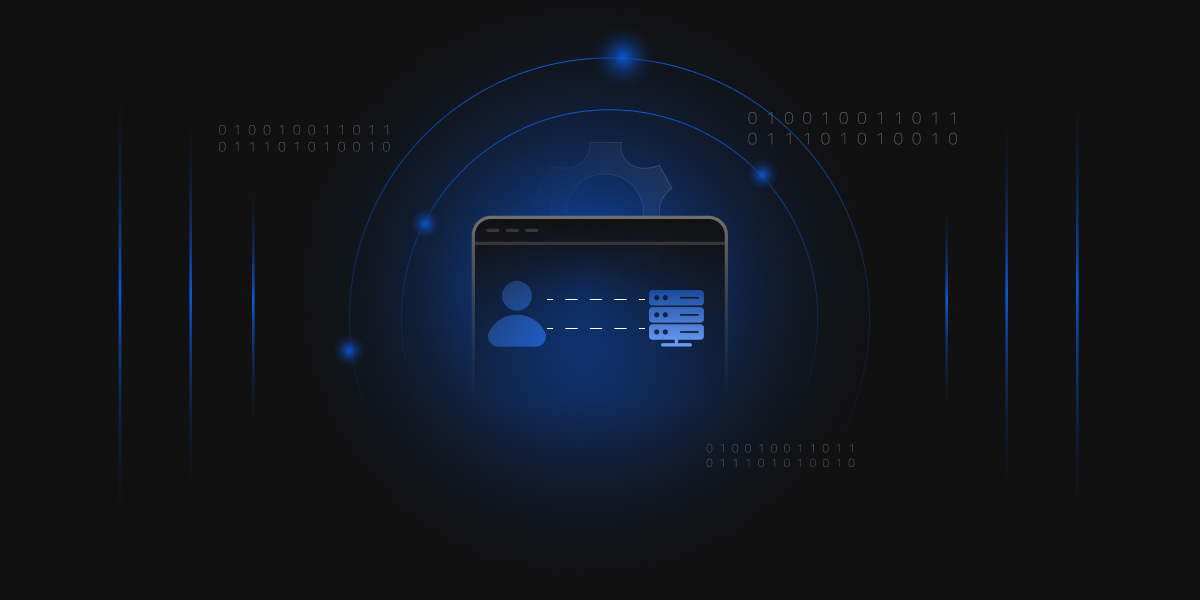Transport Layer Security (TLS) encryption plays an important role in secure internet transactions, protecting sensitive information such as login credentials, financial details, and personal data from prying eyes. Preferred over older encryption methods like SSL for its improved security, TLS operates at the transport layer (Layer 4) of the OSI model. Whether you’re browsing a website, sending an email, or making an online payment, TLS ensures that your data remains confidential and untampered.
Let’s explore every aspect of TLS encryption, including its history, handshake process, cipher suites, significance, and vulnerabilities, and how Encryption Consulting can help organizations maintain security.
What is TLS Encryption?
Transport Layer Security (TLS) is a cryptographic protocol created to provide secure communication and data transfer over a computer network, primarily the Internet. It integrates with the broader cybersecurity ecosystem, working alongside tools like firewalls and Hardware Security Modules (HSMs) to enhance overall network security, such as filtering network traffic, managing cryptographic keys, and much more. It ensures three core principles:
- Encryption: Hides data from unauthorized parties, making it unreadable to eavesdroppers.
- Authentication: Verifies the identity to ensure that you’re connecting to the legitimate server.
- Integrity: Guarantees that data isn’t altered or tampered with during transmission.
TLS, the successor to Secure Sockets Layer (SSL) developed by Netscape in 1995, is a cryptographic protocol that addresses SSL’s vulnerabilities and improves performance. Though often used interchangeably, TLS is the modern standard, with TLS 1.3, published by the Internet Engineering Task Force (IETF) in 2018, offering enhancements like 0-RTT (zero round-trip time) for faster connections and stronger security through simplified handshake processes.
TLS is most visibly used in HTTPS (Hypertext Transfer Protocol Secure). It is that padlock icon that you see next to a website’s URL, which indicates a TLS-secured connection. It is also used in many other domains such as email (SMTP, IMAP), voice over IP (VoIP), virtual private networks (VPNs), and more.
Why is TLS Encryption Important?
The internet is a public network, and without encryption, data travels in plain text, making it vulnerable to interception. Without TLS, sensitive information like passwords, credit card numbers, and personal details could be easily stolen. TLS mitigates risks such as eavesdropping (unauthorized listening to data transmissions), man-in-the-middle (MITM) attacks (where an attacker intercepts and alters communication between two parties), and data tampering (unauthorized modification of data).
According to Google’s Transparency Report, as of April 2025, over 90% of web pages loaded in Chrome use HTTPS, which relies on TLS.

The growing popularity of TLS highlights its importance for building trust with consumers, enhancing SEO rankings through secure website signals, displaying user trust indicators like the padlock icon, and protecting businesses from reputational or financial issues.
The Evolution of TLS
It all started with the Secure Sockets Layer (SSL), which was in the mid-1990s but had many flaws and security issues. Recognizing the need for further improvements, the Internet Engineering Task Force (IETF) took over the development of SSL, leading to its renaming as Transport Layer Security (TLS). SSL/TLS has evolved through several versions to address emerging threats and improve efficiency:
| Year | SSL/TLS Version | Details |
|---|---|---|
| 1994 | SSL 1.0 | The initial version had security flaws and was never made available to the public. |
| 1995 | SSL 2.0 | It was the first publicly released version for HTTP traffic encryption and secure communication. |
| 1996 | SSL 3.0 | It addressed many of the security weaknesses of SSL 2.0 and became widely adopted with better algorithms and cipher suites. It was deprecated in 2015. |
| 1999 | TLS 1.0 (RFC 2246) | Essentially an evolution of SSL 3.0, TLS 1.0 included minor improvements but maintained a strong resemblance to its predecessor, SSL 3.0, but still, both protocols aren’t interoperable. Both SSL 3.0 and TLS 1.0 were deprecated in 2015 and 2020, respectively, due to known security vulnerabilities. |
| 2006 | TLS 1.1 (RFC 4346) | This update addressed several security concerns identified in TLS 1.0. Key improvements included protection against cipher-block chaining (CBC) and padding oracle attacks, as well as better handling of initialization vectors. |
| 2008 | TLS 1.2 (RFC 5246) | TLS 1.2 introduced stronger cryptographic algorithms (AES, SHA-2, etc.), improved cipher suite negotiation, and the deprecation of weaker algorithms. |
| 2018 | TLS 1.3 (RFC 8446) | It streamlined the handshake process, reducing latency and improving connection establishment speed. It also removed support for many older, less secure features and algorithms (such as SHA-1, MD5, DES, 3DES, and RC4), which are no longer supported by major browsers like Chrome, Firefox, Safari, and Edge in TLS 1.2 and 1.3., reflecting the ongoing trend toward stronger, faster, and more secure cryptographic standards. |
What is a Cipher Suite?
A cipher suite is a set of algorithms that defines how TLS secures a connection. They are considered the building blocks of TLS, and they include:
- Key Exchange Algorithm: Determines how the session key is shared (e.g., ECDHE for perfect forward secrecy, which ensures that past session keys remain secure even if the server’s private key is compromised, enhancing long-term data protection).
- Encryption Algorithm: Specifies the method used to encrypt data (e.g., AES-256-GCM).
- Authentication Algorithm: Verifies identities (e.g., RSA or ECDSA).
- Hashing Algorithm: Ensures data integrity (e.g., SHA-256).
For example, the cipher suite TLS_ECDHE_RSA_WITH_AES_256_GCM_SHA384 uses ECDHE for key exchange, RSA for authentication, AES-256-GCM for encryption, and SHA-384 for hashing. TLS 1.3 supports only five cipher suites, all with perfect forward secrecy, and unlike TLS 1.2, its cipher suites no longer specify key exchange and authentication algorithms, which are now handled separately. Compared to TLS 1.2’s broader range, which included less secure options, this enhances security and simplicity.
How Does TLS Encryption Work?
TLS operates at the transport layer (Layer 4) and application layer (Layer 7) of the OSI model, securing data between clients (e.g., your browser) and servers (e.g., your website). Here’s a step-by-step breakdown:
1. The TLS Handshake
The TLS handshake is the initial operation that establishes a secure connection before data transfer begins, adding some latency due to multiple message exchanges. TLS 1.3 optimizes this process by streamlining it and enabling faster connection establishment, such as through 0-RTT (Round Trip Time) for resuming sessions.
- Client Hello: The client sends the list of supported TLS versions, cipher suites, and a random number.
- Server Hello: The server selects a TLS version and cipher suite, sends its digital certificate (containing its public key and domain details), and provides a random number.
- Certificate Validation: The client verifies the server’s certificate from a trusted Certificate Authority to ensure authenticity.
- Key Exchange: The client and server generate a session key (a shared secret) using methods like Diffie-Hellman (DH) or Elliptic Curve Diffie-Hellman (ECDH). TLS 1.3 requires perfect forward secrecy, protecting session keys even if the server’s private key is later compromised.
- Finished Messages: Both parties exchange encrypted messages to confirm the handshake’s success.
The handshake uses asymmetric cryptography (public and private keys) to securely exchange the session key. Once established, the session key enables faster symmetric encryption for data transfer. Session resumption methods, such as session IDs or session tickets, also allow clients and servers to avoid full handshakes on reconnects, further reducing latency.
2. Data Encryption
After the handshake, TLS uses symmetric cryptography (e.g., AES with 256-bit keys) to encrypt data. Symmetric encryption is computationally efficient and ideal for large data volumes. The data is also signed with a Hash-based Message Authentication Code (HMAC) to ensure integrity.
3. Session Termination
Once the communication ends, the session key is discarded, and a new handshake occurs for the next connection.
Post-Quantum Cryptography (PQC) and TLS
Quantum computers, leveraging algorithms like Shor’s algorithm, could potentially break widely used asymmetric cryptographic algorithms such as RSA and Elliptic Curve Cryptography (ECC), which are commonly used with TLS key exchange and authentication, posing a significant challenge to TLS encryption with the arrival of quantum computing. To counter this threat, post-quantum cryptography (PQC) algorithms are being developed to resist quantum attacks, ensuring the long-term security of TLS and other cryptographic systems.
In 2022, NIST announced its first four PQC standards, including CRYSTALS-Kyber for key encapsulation and CRYSTALS-Dilithium for digital signatures for quantum-safe cryptography.
For TLS, integrating PQC involves updating cipher suites and key exchange mechanisms. For instance, hybrid key exchange protocols, which combine classical algorithms (e.g., ECDHE) with quantum-resistant ones (e.g., Kyber), are being tested to ensure security against both classical and quantum attacks. These protocols aim to maintain backward compatibility with existing TLS implementations, but challenges include increased computational overhead, larger key sizes (e.g., Kyber’s public keys are up to 10 times larger than ECC keys), and ensuring seamless interoperability across diverse systems during the transition.
These challenges can impact performance on resource-constrained devices and the need for widespread adoption across servers and clients. The IETF is actively working on PQC standards for TLS, utilizing TLS 1.3 extensions to support quantum-safe algorithms. Drafts like “draft-ietf-tls-hybrid-design,” proposed in 2024, outline hybrid key exchange mechanisms to integrate quantum-safe algorithms into TLS 1.3, ensuring a smooth transition to post-quantum security. Organizations must begin planning for PQC adoption, including upgrading hardware security modules (HSMs) and auditing cryptographic inventories, to stay ahead of the quantum threat.
CA/B Forum’s Decision on 47-Day TLS Certificate Validity
On April 11, 2025, the CA/Browser Forum approved Ballot SC-081v3, proposed by Apple and endorsed by major players like Google, Mozilla, and Sectigo. This decision requires a phased reduction in the maximum validity period of TLS certificates from 398 days to just 47 days by March 15, 2029. Shorter validity periods enhance security by reducing the window for key compromise, limiting the time an attacker can exploit a stolen or compromised certificate. Additionally, shorter lifespans necessitate more frequent certificate renewals, improving monitoring and alerting processes by ensuring certificates are regularly updated and checked, while also streamlining revocation processes as outdated or compromised certificates are replaced more quickly.
The phased timeline is as follows:
- March 15, 2026: The maximum TLS certificate validity will be reduced to 200 days.
- March 15, 2027: The maximum TLS certificate validity will be reduced to 100 days.
- March 15, 2029: The Maximum TLS certificate validity will be reduced to 47 days.
The CA/B Forum’s decision shows the industry’s commitment to dynamic security practices, but organizations must act now to adopt automated certificate lifecycle management, such as Encryption Consulting’s CertSecure Manager, and leverage ACME (Automatic Certificate Management Environment) protocols for seamless automation to avoid disruptions.
How Can Encryption Consulting Help?
Transitioning to and maintaining strong TLS configurations can be complicated, especially for organizations with legacy systems or large-scale networks. Encryption Consulting’s CertSecure Manager is a powerful certificate lifecycle management platform designed to simplify and secure TLS certificate management , with compatibility across major Certificate Authorities (CAs) like DigiCert, Sectigo, and Entrust, as well as Hardware Security Modules (HSMs).
- Automation: Our platform automates the issuance, renewal, and revocation of TLS certificates, eliminating the risks associated with manual processes.
- Centralized Visibility and Control: It provides a unified dashboard to monitor all TLS certificates across an organization’s infrastructure, including on-premises, cloud, and hybrid environments.
- Compliance and Reporting: It also helps generate detailed reports to demonstrate compliance with standards like PCI-DSS, GDPR, and the CA/B Forum’s requirements.
- Scalability and Flexibility: CertSecure Manager makes it easier for you to scale and manage thousands of certificates, making it ideal for enterprises with complex networks.
Along with our CLM solution, we also offer Encryption Services to further assist organizations in establishing and maintaining robust encryption strategies. We will provide you with guidance on everything from TLS implementation and configuration to ongoing security audits and incident response. Whether you need help assessing your current encryption posture, migrating to stronger protocols, or simply ensuring best practices are in place, our services will help you overcome the complex encryption challenges and ensure your data remains secure and compliant.
Conclusion
TLS encryption is the foundation of internet security, protecting data in an increasingly harsh digital environment. From its secure handshake process to its evolving cipher suites, TLS ensures privacy, authenticity, and integrity for billions of daily transactions.
However, its effectiveness depends on proper implementation and ongoing maintenance. Encryption Consulting’s CertSecure Manager will provide the expertise and support needed to navigate TLS complexities, ensuring organizations stay secure and compliant.




